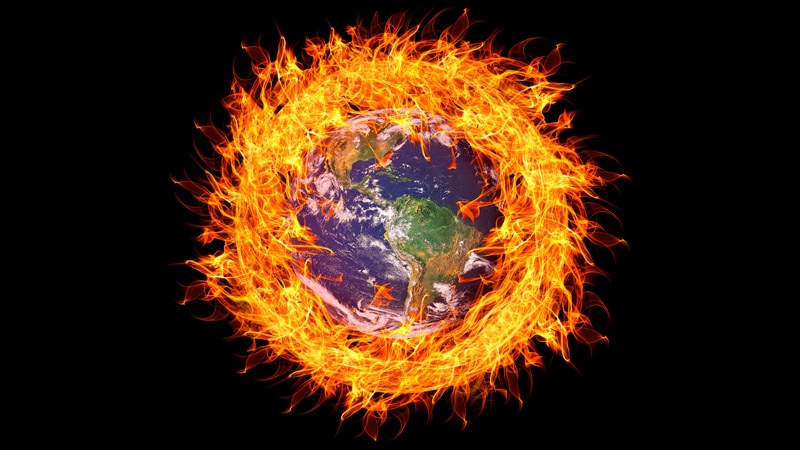An extensive new study shows that climate change can aggravate over half of known human pathogenic diseases. This comprehensive systematic review of the literature narrowed down 3213 cases, linking 286 infectious diseases to specific climate change hazards. Of these, 58% were worsened, and only 9 conditions showed any benefit associated with environmental change.
The study was published online today in Nature Climate Change. The complete list of cases, transmission pathways, and associated papers can be explored in detail — a remarkable, interactive data visualization.
To compile the data, investigators searched 10 keywords on GIDEON (Global Infectious Disease and Epidemiology Network) and CDC (Center for Disease Control and Prevention) databases. They then filled gaps by examining alternative names of the diseases, pathogens, and hazards.

Dr Tristan McKenzie
Co-author Tristan McKenzie, PhD, a postdoctoral researcher at the University of Gothenburg, Gothenburg, Sweden, told Medscape Medical News: “If someone is interested in a certain pathway, it’s a beautiful starting point.” Or if someone wants to “do a modeling study and they want to focus on a specific area, the specific examples in the literature are already there” in the extensive database.
An early key finding is that warming and increased precipitation broadened the range of many pathogens through expansion of their habitat. This shift brings many pathogens closer to people. We have already seen vectors such as mosquitoes, ticks, fleas, birds, and several mammals spreading infections over a broader range. Examples are viruses (dengue, Chikungunya), bacteria (Lyme), protozoans (trypanosomes), and more. Warming has affected aquatic systems (eg, Vibrio) and higher altitudes and latitudes (malaria, dengue).
Pathogenic hazards are not just moving closer to people. People are also moving closer to the pathogenic hazards, with heat waves causing people to seek refuge with water activities, for example. This increases their exposure to pathogens, such as Vibrio, hepatitis, and water-borne gastroenteritis.
Some hazards, such as warming, can even make pathogens more virulent. Heat can upregulate Vibrio‘s gene expression of proteins affecting transmission, adhesion, penetration, and host injury.
Heat and rainfall can increase stagnant water, enhancing mosquitoes’ breeding and growing grounds and enabling them to transmit many more infections.
People’s capacity to respond to climate hazards can also be impaired. For example, there is a reduced concentration of nutrients in crops under high CO2 levels, which can result in malnutrition. Lower crop yields can further fuel outbreaks of measles, cholera, or Cryptosporidium. Drought also likely forces people to drink contaminated water.
Among all this bad news, the authors found a small number of cases where climate hazards reduced the risk of infection. For example, droughts reduced the breeding grounds of mosquitoes, reducing the prevalence of malaria and chikungunya. But in other cases, the density of mosquitoes increased in some pools, causing an increased local risk of infection.
Naomi Hauser, MD, MPH, assistant clinical professor at UC Davis in Sacramento, California, told Medscape Medical News she was particularly impressed with the data visualization. “It really emphasizes the magnitude of what we’re dealing with. It makes you feel the weight of what they’re trying to represent,” she said.
On the other hand, Hauser said she would have liked “more emphasis on how the climate hazards interact with each other. It sort of made it sound like each of these climate hazards is in a vacuum — like when there’s floods, and that’s the problem. But there are a lot of other things…like when we have warming and surface water temperature changes, it can also change the pH of the water and the salinity of the water, and those can also impact what we see with pathogens in the water.”
McKenzie explained one limitation: the study looked only at 10 keywords. So an example of a dust storm in Africa causing an increase in Vibrio in the US could not be identified by this approach. “This also goes back to the scale of the problem, because we have something going on in the Sahara that’s impacting the East Coast of the US,” he said. “And finding that link is not necessarily obvious — or at least not as obvious as [if] there was a hurricane and a bunch of people got sick from waterborne disease. So I think that really highlights the scale of this problem.”
Instead of looking at only one individual or group of pathogens, the study provided a much broader review of infections caused by an array of climate hazards. As McKenzie said, “No one’s actually done the work previously to really just try and get a comprehensive picture of what we might be dealing with. And so that was the goal for us.” The 58% estimate of diseases worsened by climate change is conservative, and, he says, “Arguably, this is an even bigger problem than what we present.”
McKenzie concluded: “If we’re looking at the spread of some more serious or rare diseases in areas, to me then the answer is…we need to be aggressively mitigating greenhouse gas emissions. Let’s start with the source.”
McKenzie and Hauser report no relevant financial relationships.
Nature Climate Change. Published online August 8, 2022. Full text
Judy Stone, MD, is an infectious disease specialist and author of Resilience: One Family’s Story of Hope and Triumph Over Evil and of Conducting Clinical Research , the essential guide to the topic. You can find her at drjudystone.com or on Twitter @drjudystone .
Source: Read Full Article
